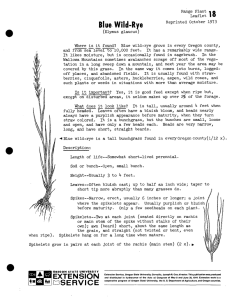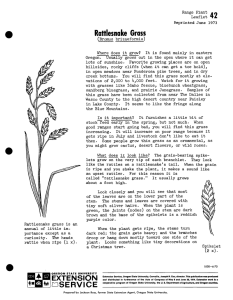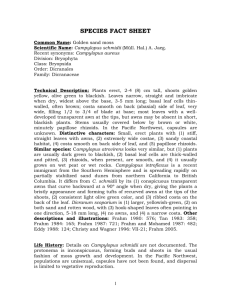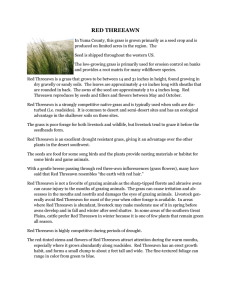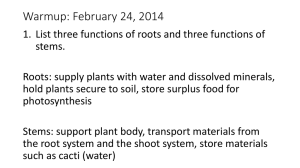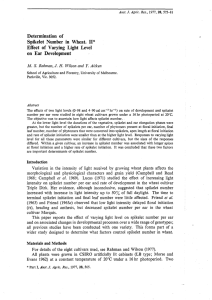13 Bottlebrush Squirreltail Range Plant Leaflet
advertisement
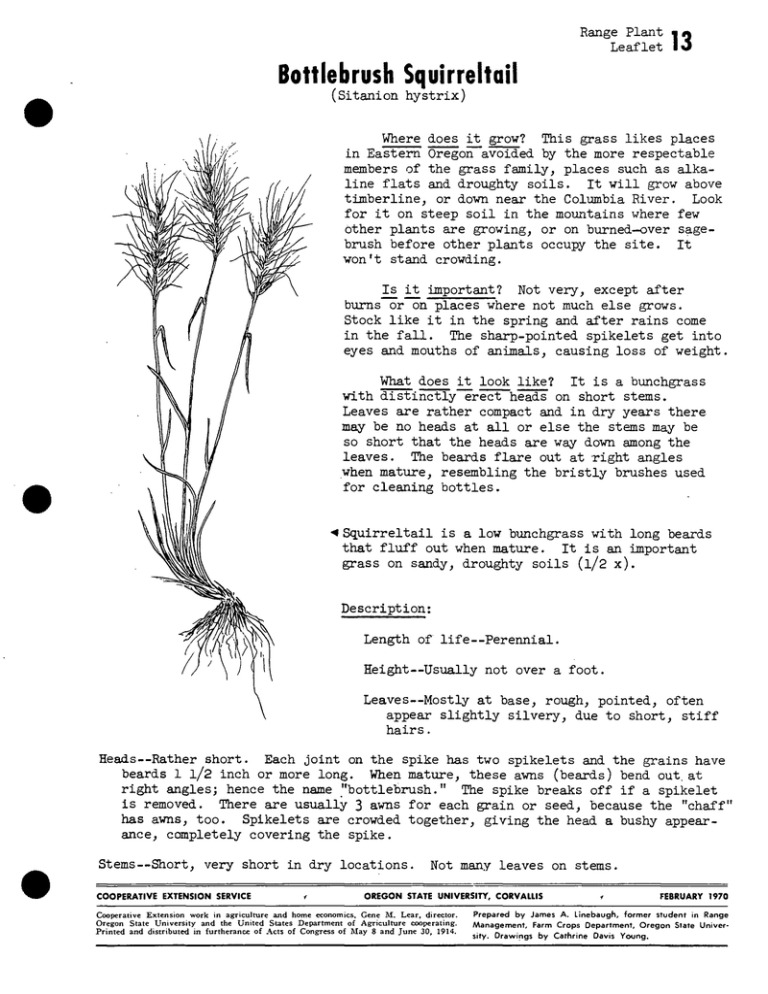
Range Plant Leaflet 13 Bottlebrush Squirreltail (Sitanion hystrix) Where does it grow? This grass likes places in Eastern Oregon avoided by the more respectable members of the grass family, places such as alkaline flats and droughty soils. It will grow above timberline, or down near the Columbia River. Look for it on steep soil in the mountains where few other plants are growing, or on burned—over sagebrush before other plants occupy the site. It won't stand crowding. Is it Important? Not very, except after bums or on places where not much else grows. Stock like it in the spring and after rains come in the fall. The sharp-pointed spikelets get into eyes and mouths of animals, causing loss of weight. What does it look like? It is a bunchgrass with distinctly erect heads on short stems. Leaves are rather compact and in dry years there may be no heads at all or else the stems may be so short that the heads axe way down among the leaves. The beards flare out at right angles when mature, resembling the bristly brushes used for cleaning bottles. ■« Squirreltail is a low bunchgrass with long beards that fluff out when mature. It is an important grass on sandy, droughty soils (l/2 x). Description: Length of life—Perennial. Height—Usually not over a foot. Leaves—Mostly at base, rough, pointed, often appear slightly silvery, due to short, stiff hairs. Heads—Rather short. Each joint on the spike has two spikelets and the grains have beards 1 l/2 inch or more long. When mature, these awns (beards) bend out. at right angles; hence the name "bottlebrush." The spike breaks off if a spikelet is removed. There are usually 3 awns for each grain or seed, because the "chaff" has awns, too. Spikelets are crowded together, giving the head a bushy appearance, completely covering the spike. Stems—Short, very short in dry locations. COOPERATIVE EXTENSION SERVICE Not many leaves on stems. OREGON STATE UNIVERSITY, CORVAUIS Cooperative Extension work in agriculture and home economics, Gene M. Lear, director. Oregon State University and the United States Department of Agriculture cooperating. Printed and distributed in furtherance of Acts of Congress of May 8 and June 30, 1914. FEBRUARY 1970 Prepared by James A. Linebaugh, former student in Range Management, Farm Crops Department, Oregon State University. Drawings by Cathrine Davis Young. Description: (continued) Method of spread--Entirely by seeds. Other names--Foxtail, needlegrass. Does it look like anything else? There are several grasses with long awns, but no other with awns that stick straight out sideways when ripe. Also, no others with 2 spikelets at each joint, instead of 3, as the wild barleygrasses have. (The wild wheatgrasses have only 1 spikelet at a joint.) So, if the spike breaks up when the grains drop off, there are 2 spikelets in a place, the awns are very rough and are long and stick out straight—it's squirreltail. -4 Squirreltail has sharp seeds with straight awns that are never twisted like a pretzel or a corkscrew (l x).
